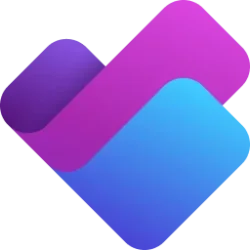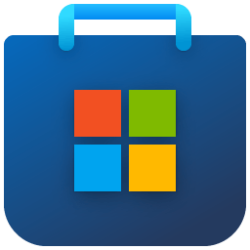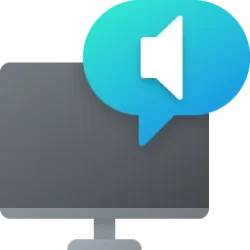Microsoft Entra Blog:
Microsoft is rolling out a new sign in experience for over 1 billion end users. What we learn can help to improve sign-in for all Microsoft customers.
Hello friends,Today, I’m excited to share that we’re making authentication more modern, simple, and secure for over a billion Microsoft accounts. People around the world use Microsoft accounts to sign in to Windows, Xbox, Microsoft 365, and more. By the end of April, most Microsoft account users will see updated sign in and sign-up user experience (UX) flows for web and mobile apps built using Microsoft’s Fluent 2 design language.
Improving the consumer user experience for Microsoft accounts
Over the past few years, we’ve modernized the end user experiences for cloud-connected experiences in Windows, Xbox, M365 and more. And, as new authentication methods, like passkeys, became available, we decided to redesign the sign in user experience as well. The new experience takes advantage of Microsoft's “Fluent 2” design language to help users seamlessly transition between authentication and product experiences. We also made a few changes in the flow to reduce user error and boost account recoverability.Upgrading to a streamlined, modern design
Simplifying the design and flow of authentication was our first step. We’ve reduced the number of concepts per screen to lower cognitive load and speed up the authentication process, plus re-ordered some steps to logically flow better.Additionally, the centered design of the new experience reduces distraction and keeps things focused. Responsive design allows us to scale the UX to look great on any form factor, from large desktop monitors to mobile devices.

Figure 1. The new, responsive username screen for Microsoft account sign in and account creation.
We also made changes based on direct customer feedback. One of the most highly requested features was to support theming. With our new sign in UX, most sign in screens will support both a Light Theme and Dark Theme, which are enabled automatically based on a user’s preference. The first place to see this will be on Gaming apps. Other consumer apps will support Dark Mode in the future.

Figure 2. The new sign in screen for Microsoft account in Dark Mode with Xbox brand colors.
Creating an “unmistakably Microsoft” look and feel
We’re taking a step back from product-centric designs of the past and stepping into the Microsoft-forward design language offered by Fluent 2. Within product experiences, sign in screens will support consistent product brand colors in buttons and links, but the Microsoft logo is front and center. In addition, we’ve introduced a distinctly Microsoft background image that doesn’t change from product to product. This Microsoft-centric design provides a visual throughline across all the places you sign in with your Microsoft account.Emphasis on passwordless
Streamlining the authentication UX design allowed us to rethink the default experiences for sign in, putting even greater emphasis on usability and security. Over the last few years, we’ve introduced several enhancements, including the ability to completely remove the password from your account and support for passkey sign in instead of using a password. Our new UX is optimized for a passwordless and passkey-first experience.passkey
 www.elevenforum.com
www.elevenforum.com

Figure 3. The new passkey "nudge” screen.
Here’s an example of how we're making Microsoft accounts more secure from the very first interaction. The first thing users do when signing up for a new Microsoft account is enter their email address—the one they already have and use on a regular basis. Unless they are signing up in Microsoft Outlook with the intent of creating a new email address, they probably already have one that they can use for their Microsoft account.
Why is this important? By bringing your own email address to a new Microsoft account, you start in a recoverable state, and you don’t have to create a new Microsoft password that could be easily forgotten or guessed by an attacker. All you need to do is verify the email with a one-time code, and this becomes the default credential for your new account, so you start off passwordless. Not only that, but you now have an email address attached to your account if you ever need to recover your account or get started on a new device.

Figure 4. The new code entry screen for Microsoft account creation.
After you’re signed in, you’ll be invited to add a passkey. If you don’t add it during sign in, you can always add one later from your Microsoft account settings. We’re also updating the Microsoft account sign in logic, so your passkey is the default sign in choice whenever possible, because passkeys are more secure and three times faster than passwords.
Global rollout of new experience is happening now
Xbox fans are already enjoying the new Fluent design when they sign in! We launched the new design to gaming web and mobile properties in February via A/B experimentation. This targeted experiment let us gather data on our redesign, especially testing the new Dark Theme support, where we saw positive impact of the new UX with this wide set of Microsoft account users.Updates to the full set of Microsoft consumer experiences are happening in waves throughout March and April 2025. We prioritized redesigning and improving the most common and highly used screens, used in roughly 95% of sign in sessions. Therefore, web and mobile apps will show the new UX first, and support for apps on Windows will follow. Because the changes are being deployed in waves across multiple weeks, if you look today, you might still see screens with our original design language.
No impact today on Microsoft Entra accounts
This Microsoft account authentication redesign has no impact currently on Microsoft Entra accounts, also known as work or school accounts, so Microsoft Entra customers don’t need to do anything related to this UX rollout for consumers.However, the learnings from these improvements give my team valuable insights for updating the default Microsoft Entra and Microsoft Entra External ID account experiences in the future, including the common sign in screen for apps that support authentication via both Microsoft accounts and Microsoft Entra accounts.
We are constantly learning from our UX experiments and your feedback, and we’re eager to share more insights in the future. As always, we love hearing from you— so please drop a note in the comments section of this article.
Source:

New user experience for consumer authentication | Microsoft Community Hub
Microsoft is rolling out a new sign in experience for over 1 billion end users. What we learn can help to improve sign-in for all Microsoft customers.










